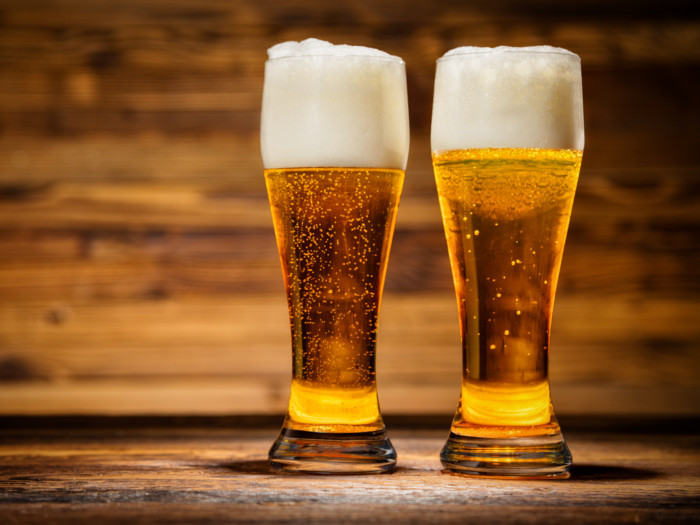The difference of lager vs ale are discussed in beer halls across the world, and there are some key differences that separate these two types of alcohol.
Lager vs Ale
Lager and ale are both categories of beer, the broad term for any alcoholic beverage made from fermented grains. [1]
Taste
- Lager: Lager is usually crisp and slightly fizzy with light, mild flavors that are widely enjoyed across the world.
- Ale: There is a broad range of ales, but they tend to be richer and stronger than lagers, with flavors from both the fruit and hops. For more information on the different kinds of ales, you can visit the Top 11 Types of Ale & Nutrition Facts.

Most lager beers have crisp and simple flavors. Photo Credit: Shutterstock
Ingredients
Both lager and ale are made from water, grain (usually malted barley), hops, and yeast. However, the type of yeast used in their fermentation is clearly different in both the beverages.
- Lager: Lager beer needs a ‘bottom-fermenting’ yeast, which ferments at temperatures of 7-15°C. [2]
- Ale: Ale production uses ‘top-fermenting’ yeast that ferments at temperatures from 10-25°C.
The ratio of these ingredients vary. Other ingredients, such as herbs and fruit, are sometimes added to produce different flavors.
Alcohol Content
- Lager: Lagers tend to have an ABV of 3-6%. [3]
- Ale: The average alcohol range of ale is greater, at 3-15% ABV.
Fermentation
In addition to the type of yeast used, the key difference between lager and ale lies in the fermentation process.
- Lager: Lager is fermented in cold conditions, in which the yeast sits at the bottom of the barrel. This makes for longer fermentation time, resulting in the clean and mellow taste. [4]
- Ale: Ale is produced through a warm ferment, which allows the esters responsible for fruity aromas to emerge.
Storage
Lager is best stored and drunk chilled, whereas ale is usually happy at room temperature.
Adverse risks associated with alcohol consumption: The risks involved with drinking excessive alcohol can be short term such as violence and injuries to long-term health risks such as chronic diseases. According to the Centers for Disease Control and Prevention, people who should not drink alcohol include women who are pregnant, individuals younger than 21 years of age, and people who are recovering from alcoholism or cannot control the amount they drink. Also, it should be avoided by people who are planning to drive or any other activity that required focus and skill. However, different countries have different rules on alcohol purchase and consumption. [5]
